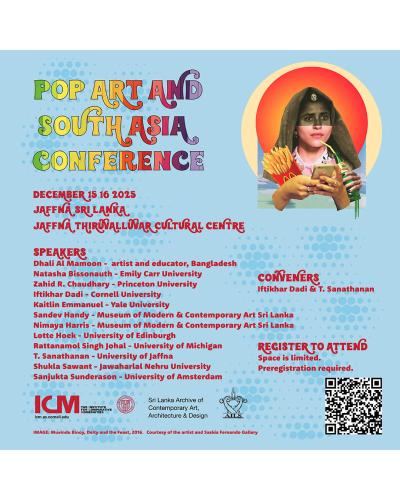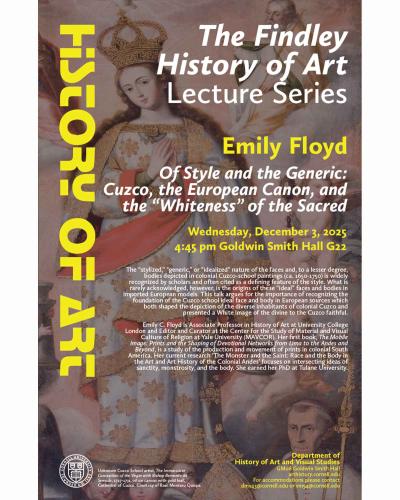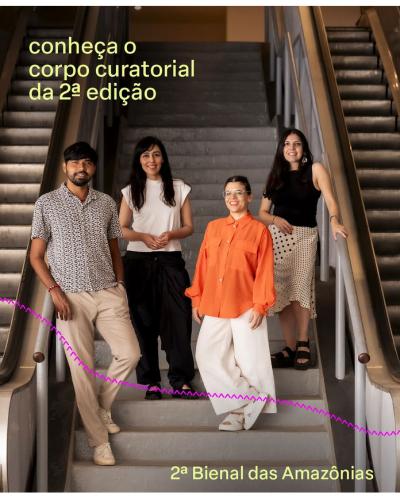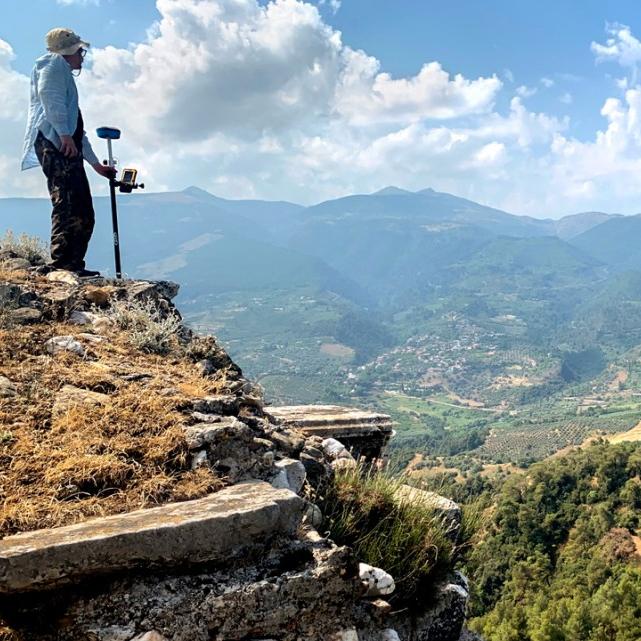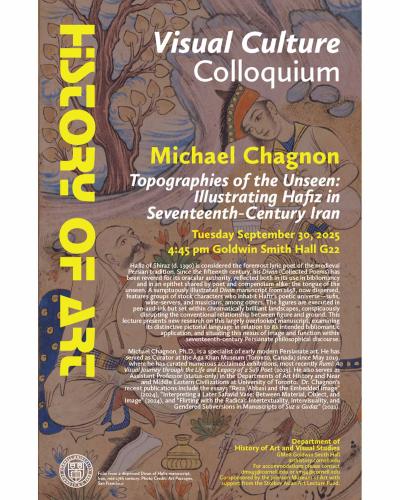"Topographies of the Unseen: Illustrating Hafiz in Seventeenth-Century Iran"
Tuesday, September 30th, 4:45 PM
Goldwin Smith Hall G22
Abstract
Hafiz of Shiraz (d. 1390) is considered the foremost lyric poet of the medieval Persian tradition. Since the fifteenth century, his Divan (Collected Poems) has been revered for its oracular authority, reflected both in its use in bibliomancy and in an epithet shared by poet and compendium alike: the tongue of the unseen. A sumptuously illustrated Divan manuscript from 1658, now dispersed, features groups of stock characters who inhabit Hafiz’s poetic universe—sufis, wine-servers, and musicians, among others. The figures are executed in pen-and-ink but set within chromatically brilliant landscapes, conspicuously disrupting the conventional relationship between figure and ground. This lecture presents new research on this largely overlooked manuscript, examining its distinctive pictorial language in relation to its intended bibliomantic application, and situating this nexus of image and function within seventeenth-century Persianate philosophical discourse.
Biography
Michael Chagnon, Ph.D., is a specialist of early modern Persianate art. He has served as Curator at the Aga Khan Museum (Toronto, Canada) since May 2019, where he has curated numerous acclaimed exhibitions, most recently Rumi: A Visual Journey through the Life and Legacy of a Sufi Poet (2023). He also serves as Assistant Professor (status-only) in the Departments of Art History and Near and Middle Eastern Civilizations at University of Toronto. Dr. Chagnon's recent publications include the essays “Reza ‘Abbasi and the Embedded Image” (2024), “Interpreting a Later Safavid Vase: Between Material, Object, and Image” (2024), and “Flirting with the Radical: Intertextuality, Intervisuality, and Gendered Subversions in Manuscripts of Suz u Gudaz” (2021).

